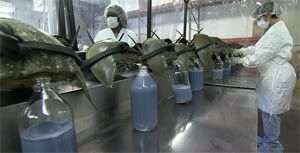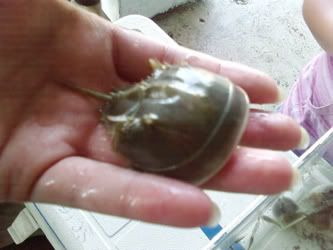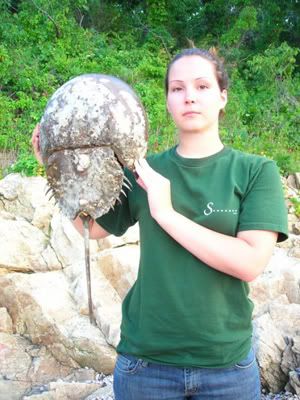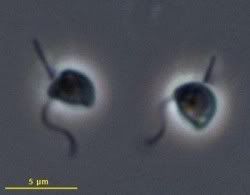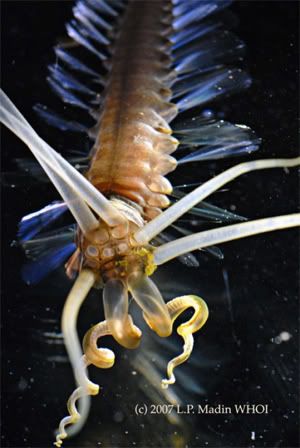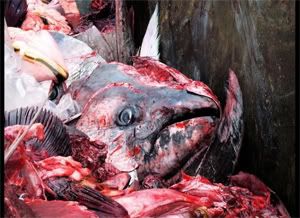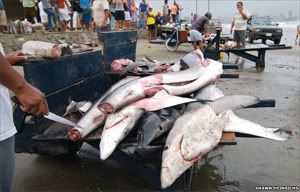
photo credit Shawn Heinrichs
Chinese New Year is Thursday, and celebrations will be happening all week long. While I'm all for dancing dragons, beautiful paper lanterns, fireworks and a shit-ton of rice, one Chinese tradition I will not be enjoying is shark fin soup.
Shark fin soup has been described as "bland" and "gelatinous." Not exactly something appealing. Yet, as a status symbol, it has been gaining popularity for quite some time as the middle class economy in China has grown.
The practice of finning is gruesome and wasteful beyond a doubt. Live sharks of every species are caught and their fins are cut off while the animals are still alive. Only the fins are saved - the rest of the shark is thrown back into the sea. Unable to swim with their fins now removed, the sharks sink to the bottom and die a slow death, often eaten alive by scavengers or smaller fish. Additionally, many shark species need to swim in order to push oxygenated water over their gills to breathe. Without the ability to swim, the sharks slowly suffocate on the ocean floor.
It was recently announced by the Pew Environment Group and a wildlife trade monitoring network called Traffic that the ten-year shark conservation plan set by shark fishing nations has failed. Agreed upon in 2001, recommendations included "identifying and protecting key habitat, ensuring catches are sustainable, and minimising waste and discards."
Of the top 20 shark fishing nations - which account for 80% of the worldwide catch (~100 million animals per year) - only 13 currently have national plans outlined.
"'The fate of the world's sharks is in the hands of the top 20 shark catchers, most of which have failed to demonstrate what, if anything, they are doing to save these imperiled species,' said Glenn Sant, leader of Traffic's global marine programme."
Due to the increase in negative publicity, and the knowledge spreading that shark fin soup is no longer a sustainable dish, many restaurants have been taking positive measures and removing it from their menus.
Says Bernard Ng, Imperial City restaurant manager in London: "Times are changing and this once popular dish has become less fashionable in recent years...I think it's a positive decision that sets us apart from other Chinese restaurants."
But what can you and I do about it?
Well, for starters, don't buy shark fin soup! Don't ask for it, don't order it, don't go to restaurants and events that offer it...Reduce the demand! You are in control of what you support, so make a conscious effort not to support this unsustainable dish.
If you're on Facebook, I highly recommend looking up The Global Shark Initiative. They're a great organisation that offers lots of information and opportunities to take action on behalf of sharks - simple things we all can do to make a difference, like writing letters or sharing information via links. Save our Sharks from a Bowl of Soup is a similar group.
If you happen to be in London, let's go on a date! There will be a gathering of awesome environmentally-minded people in Chinatown this week, organised by EcoHustler:
"On Thursday 03 February people from many walks of life will come together in London’s Chinatown to celebrate the arrival of the Chinese New Year, and also to show their support for local efforts to take shark fin off the menu. The global trade in shark fin is pushing these ancient and awesome creatures to the brink of extinction. Sharks are apex predators, so when they are taken out, ecosystems are pushed out of balance with devastating knock-on effects. It is estimated by scientists that 90% of the global shark population has already been wiped out.
Sales of shark fin traditionally reach their peak at Chinese New Year. By visiting Chinatown on that day with flyers detailing the extent of the problem, with a positive message sustainability, we hope to change attitudes for the better, and persuade consumers to change their dining habits to protect our oceans.
You are invited to join this loose alliance of marine conservation groups, environmentalists, scientists, students and other concerned citizens to make a stand for sharks."
The more, the merrier. :)
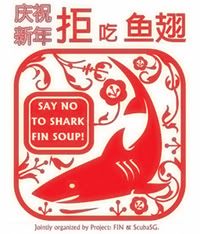
image credit The Global Shark Initiative & Din
More information:
Shark Nations Failing on Conservation Pledges - BBC
Shark Fin Soup off Menu at Chinese Restaurants - The Evening Standard
The Global Shark Initiative - Facebook
Save our Sharks from a Bowl of Soup - Facebook
More on EcoHustler's London Gathering
